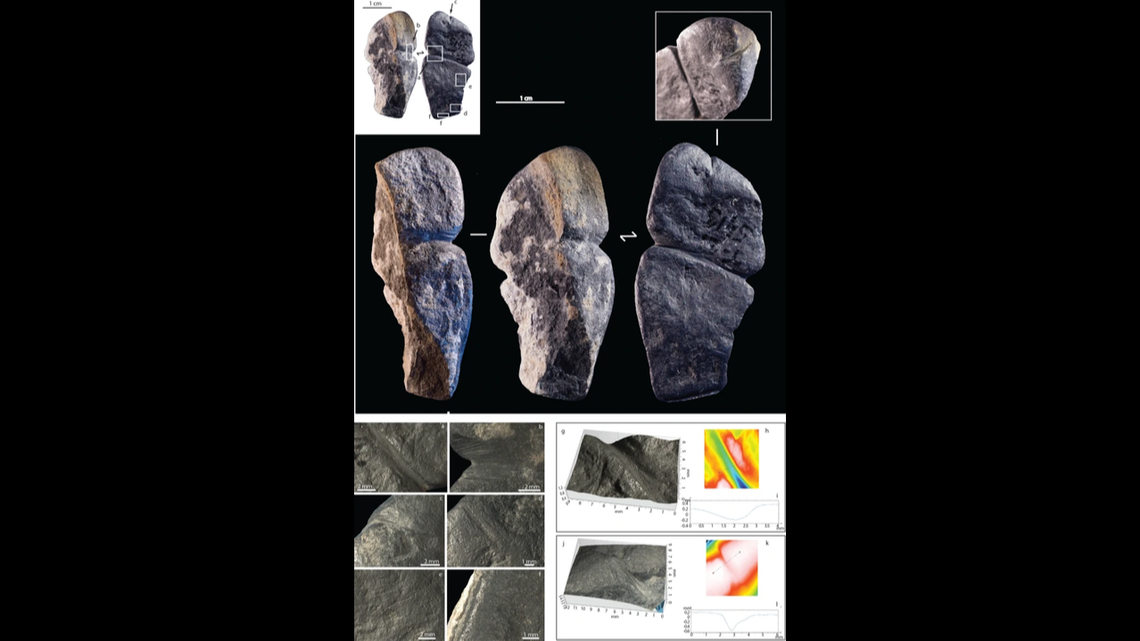Graphite penis pendant found in Mongolia might be earliest phallic art. Take a look
Around 50,000 years ago, early human civilizations were starting to create more intricate and symbolic artwork.
One recent, and arguably objectionable, discovery in Mongolia has expanded our knowledge of what that art looked like — and the range of evocative symbolism employed to create it.
Artwork was typically known to be limited to simplistic cave paintings, such as vague curvy profiles to symbolize women’s bodies or a double curved line to represent mammoths.
But when archaeologists unearthed a 1.7-inch graphite penis that appears to have been worn on a cord as a pendant, they found human understanding of symbolism may have been more complex than previously understood, according to a new study published June 12 in Scientific Reports.
The small ornament “predates the earliest known sexed anthropomorphic representation.”
The black graphite pendant has a groove at it’s mid-section and extremity, representing the anatomical structure of a penis, archaeologists said.

Experts said they discovered the pendant in 2016 while working at the Tolbor-21 archaeological site in Mongolia’s Northern Khangai Mountains. The penis dates back about 42,000 years to the Upper Paleolithic era — when early human societies began exhibiting more complex development such as specialized tools and distinct art forms, according to Britannica.
The discovery is at least 5,000 years older than the earliest known sexed representations in Europe, the study said.However, these similar representations offer experts an idea of the pendant’s purpose.
Experts said phallic art was representative of a range of things in European context, including fertility and masculinity, good luck, an understanding of reproductive anatomy, the rites of passage associated with biological maturity or religious worship. In a social context, these symbols were indicative of group cohesion a person’s sense of identity and advanced ability to think about symbolism.
While it’s not yet clear what the exact meaning of the Mongolian pendant was, experts said they can use comparisons to make educated guesses.
The small size of the pendant indicates it’s shape was only recognizable up close, so it could have had a unique meaning for its wearer.
Lead author Solange Rigaud, an archaeologist at the University of Bordeaux, told Science she is confident in her team’s diagnosis of the pendant.
“Our argument is that when you want to represent something abstractly, you will choose very specific features that really characterize what you want to represent,” she said, specifically referencing the object’s defined grooves that represent the anatomy of a penis.
Stone penis found in medieval Spanish ruins had a violent purpose, experts say
Metal detectorist finds 2,000-year-old figurine with eye-catching ‘oversized’ body part
Stone penis found in 2,000-year-old grave, photos show. It had an important purpose
